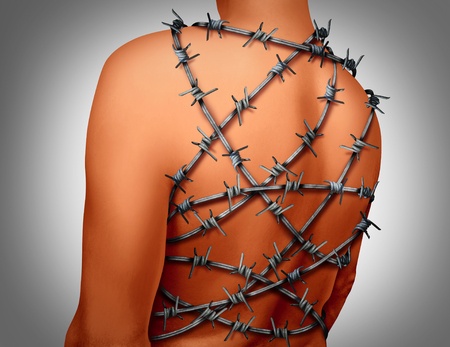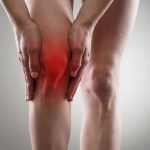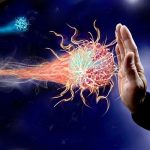
Inflammation is the intricate physiological process underlying the body’s defence mechanism against foreign substances like toxins and infectious agents such as microbes, and the repair of consequential injury. Without inflammation infections would continue unabated, our wounds would never heal and our organs would remain damaged and not able to function. A long-term consequence of inflammation is the appearance of scars in the tissue and dead (necrotised) cells.
Inflammation is also one of the enabling mechanisms that helps the immune system to operate effectively.
The tome by Robins called Basic Pathology (8th Edt.) is by far the most expansive on the whole inflammation response.
If the inflammatory response exceeds the protective anti-inflammatory effects, serious damage can occur. Likewise, the repair process can also be harmful. The accumulation of such damage throughout life has been associated with:-
- aging,
- age-dependent diseases such as cardiovascular disease,
- cancer,
- chronic diseases such as rheumatoid arthritis, atherosclerosis and lung fibrosis
- neurodegenerative disorders,
- hypersensitivity reactions to insect bites, drugs and toxins (Wang et al., 2007).
The Causes Of Inflammation
There are 4 main causes:-
- trauma (sprain, strain, contusion, etc.)
- pathogenic organisms (infections)
- chemical agents (stings, toxins, poisons, caustic agents)
- thermal extremes including heat and cold which constitute burns
Acute Inflammation
There are three events involved in acute inflammation.
- hemodynamic events
- neurologic events
- cellular events
There events tend to overlap are always related to each other. They are also the same irrespective of what causes the inflammation. The magnitude of each event depends on how serious or severe the injury, the immune status of the individual and the temperature.
The Sequence Of Events In Acute Inflammation
The order of events acute inflammation are firstly vascular dilation of the blood vessels which increases vascular permeability. There is a local hemoconcentration with slowing down of blood flow. The white blood cells are present around the margins of the trauma and there is emigration of leukocytes.
The types of inflammation are based on the nature of the exudates and include:-
Three main types:
- serous
- fibrinous
- purulent or supparative
Minor Types
- catarrhal
- haemorragic
- mucous
The serous type of inflammation is characterised by an outpouring of a watery fluid which is low in proteins. The amount of exudate depends on the site of injury.
The fibrinous inflammation usually occurs as a consequence of more severe injuries. It results in greater vascular permeability allowing large molecules such as fibrinogen to pass through the endothelial barrier.
The purulent or suppurative type of inflammation is typified by the presence of large amounts of purulent exudate or pus which is made up of neutrophils, necrotic cells and edema fluid.
An abscess is a focal collection of pus caused by seeding of pyogenic organisms into a tissue or by secondary infections of necrotic foci.
Chronic Inflammation
Chronic inflammation is prolonged and lasts weeks through to many years. There is persistent and active inflammation with tissue injury but also simultaneous healing.
It is characterised by:-
- infiltration with mononuclear cells
- plasma cells tissue destruction
- repair
- angiogenesis
- fibrosis.
Acute inflammation becomes chronic inflammation when there is the following:-
- T lymphocyte-mediated immune response known as delayed-type hypersensitivity.
- Autoimmune disease
- Immune-mediated inflammatory disease
The main issue with chronic inflammation is its persistence. It is a result of many complex interactions between various cells that are recruited to the site of inflammation and then activated at this site.
Vascular Flow & Diameter
One of the main physiological changes seen with inflammation is the alteration of vascular flow.
Changes in blood vessel begin rapidly after infection or injury but may develop at variable rates, depending on the nature and severity of the original inflammatory stimulus. Initially there is transient vasoconstriction which occurs in the first few seconds and only lasts equally as long. This is followed by arteriolar vasodilation. Then follows increased viscosity and a slowing circulation which finally ends with stasis and migration.
Granulomatous Inflammation
Granulomatous inflammation is a particular type which occurs after the acute-phase response. It involves epithelioid and giant cells.
Two types of granuloma are involved:-
- The Foreign Body granuloma which is formed in response to the indigestible materials
- The Allergic granuloma which is formed in delayed hypersensitivity reactions.
The Cellular Events Of Inflammation
A key part of the inflammatory response is to deliver leukocytes to the site of injury.
Leukocyte recruitment
The sequence of events in recruiting leukocytes involves margination, adhesion to endothelium and rolling along the vessel wall. There is also a firm adhesion to endothelium.
Leukocyte Activation
Once the leukocytes are recruited to the site of infection or tissue necrosis, they must be activated to perform their functions. They are activated by microbes, products from dead or dying cells (necrotic cells) and several mediators.
Phagocytosis
A process for removing material. It involves three distinct but interrelated steps.
- Recognition and attachment of a particle to the ingesting leukocyte.
- The particle is engulfed in the form of a phagocytic vacuole.
- The ingested material is killed and degraded by various enzymes.
Macrophages
Macrophages are the dominant cell of chronic inflammation. They are derived from circulating blood monocytes. Their function is primarily as filters for particulate matter, microbes and senescent cells. They are also guard dogs and operate as wandering sentinels. They also form a cellular bridge between innate immunity, adaptive immunity, and inflammation. This interactivity is part of what is known as the mononuclear phagocyte system. many of us also know it by the more classical name of the reticulo-endothelial system.
The macrophages are scattered throughout our connective tissues but also found in organs like the liver and lungs, our central nervous system and in our spleen and lymph nodes.
Upon activation by internal and external stimuli, macrophages produce and secrete various endogenous inflammatory mediators such as prostaglandin E2 (PGE2), nitric oxide (NO), and pro-inflammatory cytokines. Nitric oxide is produced by inducible nitric oxide synthase (iNOS), and an excess of NO during inflammation activates the synthesis of inflammatory mediators, which can in turn cause tissue damage, genetic mutations, and nerve injury (Nathan, 2002; Gosslau et al., 2011; Seo et al., 2015).
Inflammation increases the expression of anti-inflammatory proteins during the initial immune stages and is suppressed in subjects with decreased expression of inflammatory cytokine mediators (O’Shea and Murray, 2008; Lang et al., 2006).
Lymphocytes
Such cells are mobilised to the setting of any specific immune system as well as non-immune mediated inflammation on activation.
Eosinophils
The eosinophils are characteristically found in inflammatory sites around parasitic infections. They are also part of the immune reaction which is mediated by Immunoglobulin IgE that is typically associated with allergies.
Mast Cells
The sentinel cells that are widely distributed in connective tissues throughout the body. These cells take part in both acute and chronic inflammation. These cells are ‘armed’ with IgE antibody that is specific for certain environmental antigens.
Neutrophils signify acute inflammation and turn up extensively in chronic inflammation too.
Chemical Mediators Of Inflammation
Mediators are produced locally by cells ate the site of inflammation. They are also circulating in the plasma as inactive precursors that are activated at the site of inflammation too
Prostaglandins
Prostaglandin E2 is widely characterized in various animals and has numerous biological activities. For example, under physiological conditions, PGE2 is an important mediator of many biological functions, such as the regulation of the immune response, blood pressure, and tumor angiogenesis. In inflammation, PGE2 is of particular interest because it is involved in all processes leading to the classic symptoms of inflammation such as redness, swelling, and pain (Funk, 2001).
Inflammation Factors
TNF-α is a cytokine produced mainly by macrophages, although it can be produced by Kupffer cells, keratinocytes, glial cells, and T and B lymphocytes as well. Several tissues, such as liver, muscle, intestinal, and lung tissue have high-affinity receptors for TNF-α (Powell et al., 1998). Recent studies indicate that garlic for example (Allium sativum) stimulates lipopolysaccharide (LPS)-induced TNF-α production from J774A.1 murine macrophages (Sung et al., 2015). Interleukin (IL)-6 and IL-1 are some of the key inflammatory cytokines secreted by LPS-stimulated macrophages. Interleukins play a major role in the regulation of the immune system, inflammation, and oncogenesis. They are mainly produced by immune cells, including T cells, B cells, and macrophages. Interleukin-6 and its receptors are important physiological targets of potential therapeutic treatments of chronic diseases (Kishimoto, 2005).
Mitogen-activated protein kinase (MAPK) inhibitors (MAPKIs) targeting various inflammatory cells and pathways are important treatment modalities for patients with inflammatory diseases (Lowenstein et al., 1996). Down-regulation of MAPK activation by anti-inflammatory natural products in LPS-stimulated macrophages is one of the cellular mechanisms that inhibit cytokine expression (Ide and Lau, 2001).
Lysosomal Components
The cells involved in inflammation such as neutrophils and monocytes contain lysosomal granules which are used to destroy invading cellular materials. There are two types:-
Granules of neutrophils
The primary or azurophil types contain a number of enzymes and proteins such as myeloperoxidase, acid hydrolases, lysozyme, acid phosphatase, a cationic proteins called defensin, phospholipiase, cathepsin G, proteases and elastase.
The secondary or specific granules contains other enzymes including alkaline phosphatase, lactoferrin, gelatinase, collagense, lyzozyme, vitamin-B12 binding proteins and plasminogen activator.
Granules Of Monocytes and Tissue Macrophages
The monocytes and tissue macrophages are more active in chronic inflammation.
These contain acid proteases, collagnese, elastase and plasminogen activator.
Specific Mediators
Nitric Oxide
Nitric oxide is a short-activing soluble free-radical gas which has functions in its immediate vicinity. It is produced by endothelial cells and macrophages and causes the following:-
- It relaxes vascular smooth muscle and stimulates vasodilation.
- It helps kill microbes in activated macrophages.
- It counteracts platelet adhesion, degranulation and aggregation of cells.
Arachidonic Acid Metabolites (Eicosanoids)
- prostaglandins and thromboxane. These are produced via the cyclooxygenase pathway and they too cause vasodilation and prolong the effects of oedema. They also protect the gastric mucosa.
- Aspirin and NSAIDS (nonsteroidal anti-inflammatory drugs) inhibit cyclooxygenase so that the prostaglandins are not produced and so reduce the impact of inflammation.
- the arachidonic acids are also substrates for producing leukotrienes which are produced via the lipoxygenase pathway. These function as chemotaxins and produce vasoconstriction and bronchospasm. They also cause increased vascular permeability.
Platelet Activating Factor (PAF)
Platelet Activating Factor (PAF) is a phospholipid derived mediator with a broad spectrum of effects. It is produced from phospolipid held in the membrane of a range of cells involved in the inflammatory response such as neutrophils, basophils, monocytes, endothelial cells and platelets, and some other cells too all by the action of phospholipase A2.
Its function is to stimulate the platelets to aggregate, to produce immediate vasoconstriction of blood vessels and bronchoconstriction in the lung. There is a also a competing effect by inducing the slightly later process of vasodilation and increased vascular permeability. It does this at concentrations about 100 to 1000 times less than histamine. The response to PAF is enhanced leukocyte adhesion (integrin conformation), chemotaxis, leukocyte degranulation and what is termed the oxidative burst. Another important effects is the stimulation of synthesis of other mediators, particularly eicosanoids.
In recent years, the consumption of functional constituents of natural foods has increased (Izzo et al., 2016). Several countries stimulate research uncovering natural, physiologically active compounds such as antioxidants and anti-inflammatory substances.
References
. (2001) Prostaglandins and leukotrienes: advances in eicosanoid biology. Science 294: 1871–1875.
, , , , . (2011) The importance of natural product characterization in studies of their anti-inflammatory activity. Mol. Nutr. Food Res. 55: 74–82
, . (2001) Garlic compounds minimize intracellular oxidative stress and inhibit nuclear factor-kappa b activation. J. Nutr. 131: 1020–1026
, , , . (2016) A critical approach to evaluating clinical efficacy, adverse events and drug interactions of herbal remedies. Phytother Res. DOI:10.1002/ptr.5591.
. (2005) Interleukin-6: from basic science to medicine – 40 years in immunology. Annu Rev Immunol 23: 1–21.
, , . (2006) DUSP meet immunology: dual specificity MAPK phosphatases in control of the inflammatory response. J Immunol 177: 7497–7504
, , . (1996) Nitric oxide inhibits viral replication in murine myocarditis. J. Clin. Invest. 97: 1837–1843.
. (2002) Points of control in inflammation. Nature 420: 846–852.
, . (2008) Cytokine signaling modules in inflammatory responses. Immunity 28 pp. 477–487
, , . (1998) Comparison of TNFalpha and TNFbeta cytolytic mechanisms in human ovarian and cervical carcinoma cell lines. Gynecol. Oncol. 71: 258–265.
, , , . (2015) Phorbaketal A, isolated from the marine sponge phorbas sp., exerts its anti-inflammatory effects via NF-kappaB inhibition and heme oxygenase-1 activation in lipopolysaccharide-stimulated macrophages. Mar Drugs 13: 7005–7019.
, , . (2007) Cyclooxygenases, prostanoids, and tumor progression. Cancer Metastasis Rev26: 525–534.


Leave a Reply